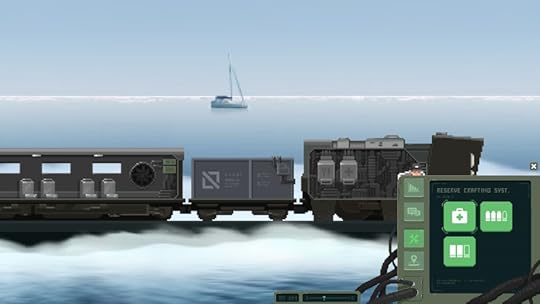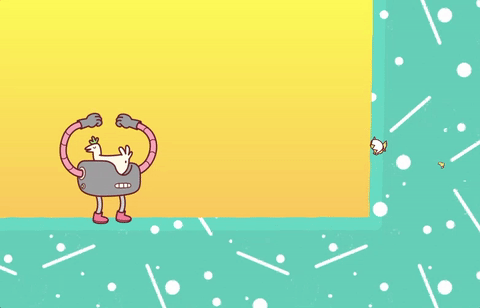Kill Screen Magazine's Blog, page 63
September 1, 2016
The Final Station finds the rare beauty of zombie fiction
If we understand the “zombie movie” as a particular set of plot beats and characters, George A. Romero’s films are what brought that to the mainstream. There’s a mysterious disease, followed by lots of killing and running from zombies, then—in Dawn of the Dead (1978) and Day of the Dead (1985), at least—some number of our heroes escape by helicopter.
Valve’s Left 4 Dead series ends up making this into a bit of a joke—each campaign is advertised with a movie poster, and ends with the players making their way to a vehicular rescue before they’re dropped into the next campaign, looking to hop on a plane this time, rather than a boat. Focused on the action, traditional American zombie media lets rescue stand as an ending—with zombies on the loose, it’s best to leave it there, rather than figure out what travel and survival mean.
I’d rather just hang out in the cabin
It’s funny, then, that The Final Station is so good at the journey. It’s not a new story—there are not-quite-zombies, the government’s keeping secrets, nobody’s safe—but here the player takes the role of a train conductor providing rescue, rather than a survivor seeking it. Characters fade in and out, taking passage where they can get it, and the army is using your train to ship different varieties of secret cargo from city to city.
The conductor spends a lot of time on the train running from the food supply to whichever train parts are malfunctioning—a minigame to keep you on your toes as the train moves between cities. In those destinations, the conductor has to hop off the train and hunt for a four-digit access code to keep going. This means rifling through papers and medicine cabinets, and fending off monsters. I have to manage my ammo supply. I have to feed my passengers, and patch them up with medkits that I’d rather save for my own zombie-induced scrapes and bruises. But having to kill or even outrun the zombies that infest these cities feels like a distraction. I’d rather just hang out in the cabin and watch my passengers argue about what they think is going on.
The Final Station isn’t quite scary, but it is sinister, and the creators at Do My Best manage to build a brooding atmosphere out of short bursts of dialogue and notes left behind. Passengers dismiss each other as crackpots or traitors, and soldiers and scientists let slip some things they shouldn’t. The zombie outbreak and the government’s silence are old tropes made compelling by the close quarters of the train car that force a plurality of opinions into harsh relief.
You can purchase The Final Station on Steam. Find out more on its website.
The post The Final Station finds the rare beauty of zombie fiction appeared first on Kill Screen.
The most dangerous enemy in ECHO’s futuristic Palace will be yourself
Most videogames are a battle of sorts between the player and the creators. Horror games use tone, aesthetic, sound, lighting, to scare and unease you. Carefully placed enemies and arenas offer challenging conflicts. Gauntlets of chasms and hazards await to test the player’s platforming prowess. But these challenges tend to be static; once the player has learned the needed skills, survived the terror, run and jumped through a game, you’ve bested the developer’s design.
But some games aren’t so … passive. Some can learn and adapt, turn the player’s skill into their weakness. The bosses in Warning Forever (2003) would swell with more armor to counter your attacks and wield more lasers or missiles if those weapons proved to be your downfall previously. Platformer Cloudberry Kingdom (2013) could generate levels that would become more or less difficult based on how well you played. Now, Ultra Ultra’s ECHO is the newest addition to that tier, a sci-fi blend of stealth and action where the player navigates a sentient structure that adapts its minions to counter your actions.
Perfect copies that draw their abilities from the way you play
That structure, the ancient technological Palace of a long-forgotten civilization, houses powerful technology within, and your pale-haired heroine En is seeking the means bring back a loved one. But the Palace will not give you this power willingly; it’s an intelligent guardian using the most effective weapon against En and, by extension, the player. From its pristine corridors and chambers emerge Echoes, perfect copies of En that draw their abilities from the way you play. Vault and sprint through rooms, and Echoes will be able to do the same in their pursuit. Wield your guns against those foes and the next iterations will be able to do the same, firing back at you with deadly precision.
The Palace draws a great deal of power to create these Echoes, and the blackouts that precede each new generation of Echoes is your time to freely fight, sneak, flee, as the Palace is blind during those times. Ultra Ultra’s ambitious project combines tense action with an enemy that can turn your favored strategies against you.
ECHO will arrive on PC and consoles in Spring 2017. You can learn more about the game on Ultra Ultra’s site, Twitter, and Facebook page.
The post The most dangerous enemy in ECHO’s futuristic Palace will be yourself appeared first on Kill Screen.
Data rot: Death and dying in the virtual age
This is a preview of an article you can read on our new website dedicated to virtual reality, Versions.
Illustration by Gareth Damian Martin
///
“And many of them that sleep in the dust of the earth shall awake, some to everlasting life, and some to reproaches and everlasting abhorrence” (Daniel 12:2).
///
Fernando de Jesus Diaz Beato is sat rigid in an ornate wooden chair. The glazed look in his eyes could be explained away by the cigar balanced between his fingers.
The truth of the matter is that he is dead. On March 3rd this year, he was shot 15 times in the Villa Carolina neighborhood in San Juan, Puerto Rico. His family decided to have him embalmed and presented at his funeral as if he were still alive—leg casually balanced on the other, hands softly clasped, baseball cap, glasses, sports gear, and eyes open.
In the Middle Ages, Fernando’s cadaver would have been known as a transi, a reminder of death—except Fernando’s flesh isn’t rotting. His preserved body, made to look as living as ever, speaks to how we in the 21st century try to deny death, reverse it, and slow its pre- and post-effects. We are perhaps no more terrified of dying than any other generations before us, but now more than ever, there’s an urgent need for self-preservation. It may be that we are vainer, being as we are, surrounded by images and opportunities that fill our minds with ideas of self-improvement. The “selfie” is the greatest icon of our age. Technology lets us precisely measure our calorie count, erase wrinkles, replace limbs, even transplant entire faces. It’s no surprise that tech billionaires are injecting the blood of younger people in a desperate bid to stop the aging process—a revealing inversion of Isaac Asimov’s novelette The Bicentennial Man (1976), in which a robot injects human blood to make itself mortal. Technology is our saving grace; we all aspire to be androids, humans minus the fat. Yet, what technology cannot do, at least not yet, is stop death from coming. It feels like we are so close—if only you could live another 80 years, perhaps you could live forever.
Back in 2007, Aubrey de Grey, the Chief Science Officer of the SENS Research Foundation, gave a controversial TED talk on how we might go about ending the aging process. Grey proposed that the first people who will live to 1,000 years old have been born, and it’s all due to ideas such as stem cell rejuvenation—the cells of younger people used to revitalize the elderly. “It’s a repair and maintenance approach to extending the functional life span of a human body,” Grey told The Washington Post. “It’s just like maintaining the functional life span of a classic car, or a house.” In May this year, two biotech companies were granted ethical permission to take on 20 dead patients and attempt to bring them back to life. The joke here would be to compare the doctors in charge of this project to Herbert West in Re-Animator (1985), but it would be no joke. According to The Telegraph, the patients will have stem cells injected into their brains, be given a “cocktail of peptides,” and also be subject to laser and nerve stimulation techniques. “This represents the first trial of its kind and another step towards the eventual reversal of death in our lifetime,” said Dr. Ira Pastor, the CEO of Bioquark Inc. It’s the start of the death of death. Though, to commit to such a narrative would be to ignore the rockstar of the undead, Jesus Christ.
READ THE REST OF THIS ARTICLE OVER ON VERSIONS.
The post Data rot: Death and dying in the virtual age appeared first on Kill Screen.
New teaser for Where Cards Fall doesn’t show much, but it’s enough
Toronto-based app developer Snowman has been having a delightful amount of success lately. Its endless runner (endless snowboarder?) Alto’s Adventure (2015) is a lighthearted, beautiful game that seemed to take great joy in doing backflips over towering mountains. Its popularity was as much due to the love and care given to the art as to the air tricks you could perform, and it would be reasonable to expect that a follow-up would share at least some of those traits. It’s surprising, then, that Snowman is preparing to do an about-turn towards melancholy with the new game Where Cards Fall.
a “bittersweet memory of adolescence”
According to collaborating designer Sam Rosenthal in conversation with The Verge, the game is based on the collapse and rebuilding of a house of cards, which has inspired him since his college days. Rosenthal’s studio The Game Band is developing, while Snowman are chipping in in areas like art and design. Unlike Alto’s Adventure, Where Cards Fall is narrative-based, and you can interact with its characters through the process of building and deconstructing the houses of cards. Rosenthal describes it as a “bittersweet memory of adolescence”: it’s a far cry from hostile, but there’s something unnerving about it all the same.
When Where Cards Fall was announced in March, its sole accompaniment was a picture of a a house that was starkly outlined by shadow and hovering in space. It looks nothing like the cool, pastel colors of Alto’s Adventure, again underlining the fundamental differences between the games despite the shared teams. But look at the first teaser, listen to the soft sounds of the cards falling in the forest, and their connection starts to make sense.
Despite the games’ differences in their ideas of play, Alto’s Adventure was praised highly for its beauty—it even has a photo mode—and is the area in which Where Cards Fall seems to be following in its footsteps. Trading mountains for forests, we catch glimpses of sun-dappled pathways and cards drifting through waterways as flowers grow on the shores. A few cards fall from the sky, shuffle into shape, and construct themselves into a small, blinking house. It’s not alpine, but it’s just as pretty to look at.
Unfortunately, that teaser is just about everything we know about Where Cards Fall. Snowman and The Game Band are tight-lipped about platforms, and all that’s being said about the release date is it’ll be in 2017. It looks like we’ll just have to be patient, and see where the cards fall.
Subscribe to Where Cards Fall’s newsletter for updates.
The post New teaser for Where Cards Fall doesn’t show much, but it’s enough appeared first on Kill Screen.
The Naked Game isn’t quite what it sounds like
Ever since Hideo Kojima’s ambitious demo, P.T. (2014), got cancelled there has been a slew of similar games announced, all looking to carry its torch. Some of them have since been cancelled, while others are still ostensibly in the throes of development, with rare updates on how things are going. However, an eight-person team based in the Czech Republic were recently able to get their P.T.-inspired game through Steam Greenlight.
The Naked Game—yes, you read that right, and no, it’s not an 18+ game—is a first-person psychological horror game with puzzle elements. The game follows the story of a mysterious Japanese girl, called Mia Aiko, who decides to leave her family and go to Europe in a desperate attempt to forget her past and live a better life.
“naked in her situation, not only physically, but also mentally”
Things don’t go quite according to plan for Aiko. She gets kidnapped by someone who is trying to make people rethink their lives, with each room they are forced to work through representing an issue in the “consumer society.” The game itself doesn’t delve too much into what these issues might be as most of them are left deliberately open for each player’s interpretation.
As for the name, The Naked Game, the team believes it fits the setting and the kidnapper’s ideology. But if you’re looking for something less metaphorical, it’s also a fact that there are a lot of naked mannequins located throughout the game’s levels. According to the studio, “they can help you to understand [the psychopath’s] thoughts more,” with the name referring to the “fact that Mia is really naked in her situation, not only physically, but also mentally.”
The game is said to adapt to your style of play, mostly through featuring dynamic post-processing, which changes “many values like color spectrum, saturation, hue, contrast and so on.” It will be about two-to-six hours long to play, depending on how good you are with puzzles and how much you want to explore and roam the creepy environments. With the game currently in its beta phase, it is expected to release some time later this year, with plans to release on Linux and Mac as well as Windows.
You can find out more about The Naked Game on its Steam Greenlight page.
The post The Naked Game isn’t quite what it sounds like appeared first on Kill Screen.
Samorost 3’s fairy tale of microbiology is now on iPhone
Samorost 3 is a game that cares about the tiniest organisms on the planet. It’s made of them: curious bugs that harvest moss, fungi blown up to the size of three-story houses, tree knots as gargantuan as an abyss. It seems fitting then, that Samorost 3 is now available on iPhone and iPad; smaller screens than the desktop PCs it was released on back in March this year, and screens that let you prod its world with your finger rather than a computer mouse.
The game is a fairy tale of microbiology, inspired by Jakub Dvorský’s love of poking his face and fingers into nature’s smallest cities, watching the tiny populations scuttle and writhe. Dvorský is the creative lead at the Czech-based studio Amanita Design and it’s his interest in microbes and landscapes and outer space—the entire wonder of the natural world, really—that has driven the studio’s output over the past decade.
a great deal of attention on texture
That includes the seminal Samorost way back in 2003, its sequel in Samorost 2 in 2005, and the more well-known Machinarium from 2009. Samorost 3 is the studio really hitting its stride. It was funded by the success of Machinarium and created over a period of around five years. The result is a fantastic world of leafy green foliage and terrifying mechanical beasts that showcases a great deal of attention to texture. You can tell just by looking at the game that its lineage is found in the great Czech animators of the 20th century, who turned mundane objects into allegorical puppets, and found ways to discuss life, death, and love through the art of claymation and stop-motion. When you see Samorost 3 in action, its feeble beings hopping and singing and flying around, it is to look upon a local history of magical animation.
Beyond that, what you can expect from Samorost 3 is a quaint tale about a space gnome who acquires a magic flute one day. Upon the wisps of its mystery, the gnome then travels across space, visiting planets, some made of aged tree bark, others springy and home to bees and flowers. It’s a wordless adventure that lets its creatures speak with inflated alien garble and hand-drawn illustrations. Between them all is a shared sense of distress that you must hunt down, but not before causing a bit of your own mischief along the way, oh, and playing some fine tunes on that flute. Which reminds me: yes, the game looks good, but the enchanting music and foley sounds are what some might call perfect. I would be one of those people.
You can purchase Samorost 3 for iPhone and iPad at the price of $4.99 over on the App Store. Read our review of the PC version here.
The post Samorost 3’s fairy tale of microbiology is now on iPhone appeared first on Kill Screen.
A videogame about puking shouldn’t be this darn cute
There’s a gigantic chicken chasing after Gilbert. In any other videogame, this would seem out of place, but not in the upcoming platformer Eggggg, where absurdity rules. The chicken is just one of the many ridiculous elements featured in the game. Did I mention Gilbert also does a lot of puking? Yes, you read that right. This game is about a boy puking his way through life while collecting eggs and running past deadly chickens.
Eggggg is being put together by Norway-based studio Hyper Games. Loosely based off the film Gilbert’s Grusomme Hevn (Gilbert’s Cruel Revenge), the film and the game explores Gilbert’s life and his allergy to eggs. Initially, the game was broad in nature with Hyper Games wanting to create a game about allergies and their effects (including sneezing, puking, or blowing up). Soon after starting on the project though, puking stood out as the most absurd and versatile action they could make players do.
Finding more fun in this absurdity, the team shifted the game’s focus solely on this—with Gilbert puking his way through levels (acting as a sort of jet pack propelling him in different directions). The team took it seriously enough that they even experimented and developed a whole host of puking-related actions from wall-jump puking to enemy-blasting puke among many others.
Drawing inspiration from recent Rayman titles to classic games like Super Mario 3 (1988) and Super Mario World (1990), Eggggg imbues a sense of humor under the hood of what could have been a typical platformer, with a character running and jumping through numerous obstacles. That cheeky humor along with the game’s candy-coloured visuals (brought to life by the Spanish-based duo Brosmind) turn Eggggg into a total mishmash of utter ridiculousness and cuteness.
“that’s funny because that will make him vomit”
Speaking with Hyper Games founder Are Sundnes, I couldn’t help but ask about the gigantic chicken. He tells me it came out of necessity because they needed Gilbert to run constantly. A gigantic chicken was the obvious scare tactic. “If [Gilbert] is allergic to eggs and he falls inside a giant egg, that’s funny because that will make him vomit. And, of course there will be an angry chicken there [running after him],” says Sundnes chuckling.
After playing the demo and seeing an endless stream of (very cute) puke, I ask Sundnes if the team had any concerns about the game becoming too puke-inducing. This, he tells me, was the reason they went for a whimsical art style. It helped to dampen the seemingly “disgusting” nature of the game’s core.
“We don’t want to make a disgusting game, we want to make it fun,” he says with a laugh. “A lot of people will probably think [all the puking] is disgusting but we’d rather do that than do something that’s boring. If a lot of people like it and a lot of people hate it, that’s fine by us.”
Eggggg is currently in development and will be available on iOS and Android later this year. For more information, visit its website or follow it on Twitter or Facebook.
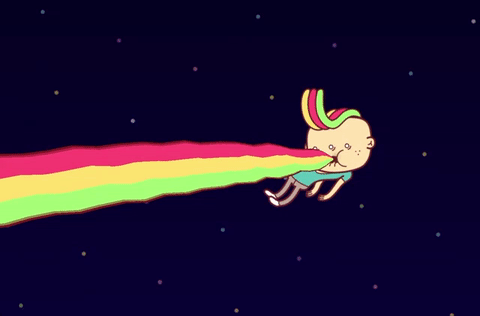
The post A videogame about puking shouldn’t be this darn cute appeared first on Kill Screen.
Simplify This Horse isn’t what you might expect
Simplify This Horse is, on the surface, a simple browser game made as a promotional tool to hype up the Swiss band Extrafish’s upcoming album, Simplify This Fish. That is, until its layers are pulled back, and what’s exposed is a game that’s obtuse, weird, and fascinating.
Extrafish is a balkan-dada-dub band, a genre you’d be forgiven for never having heard of—the band made it up. Mixing traditional balkan music with dadaistic lyrics, and dub parts, the band sounds all over the place, but in the best way possible. Songs are often hard to follow, they change radically, and they’re sonically confusing. But they’re also catchy, smart, and unique. All themes developer Odan has captured visually in Simplify This Horse.
“what the hell did I just do?”
Simplify This Horse, both the game and the song, which plays throughout it, fixates around a quote attributed to the scholar Max Frisch (1901-1995), that reads, “Simplify this horse and change its architecture and its math. Neutralize this poor animal from its fishlessness.” It’s less of a suggestion, and more of a command. The game opens with a crudely-drawn horse whose legs and head keep shaking. Upon pressing them, they fall off the horse, “simplifying” it until ultimately it becomes an eye, and then two eyes, and then a fish, then multiple fish, what looks like a wave of water, and an inverted pyramid. All ultimately revealing the cover art of Extrafish’s upcoming album.
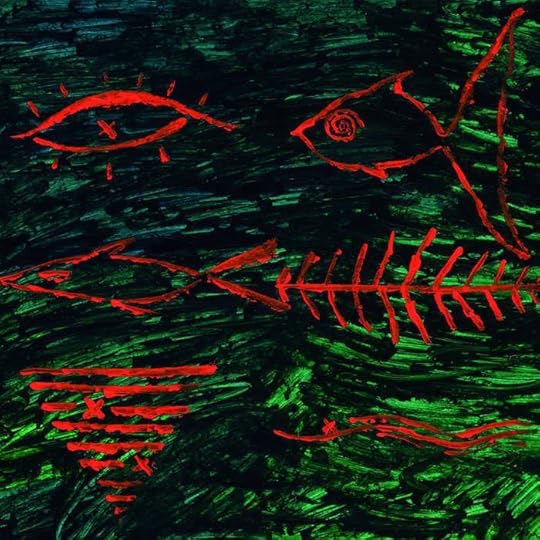
Odan told me his game is meant to leave players wondering, “what the hell did I just do?” He’s incorporated the band’s dub influence in the game, allowing players to remix the song as they interact with it, while also maintaining Extrafish’s dadaism influence.
“For me, a crucial part of [dadaism] is the attempt to go beyond the comfort zone of the audience to test them with something unknown or something they can’t categorize and provoke them to start thinking about what they just saw or heard,” he said. To achieve this, he leaves the player to trial and error, letting them experience the changing music and imagery with each mouse click. It’s intentionally irritating, Odan said, because he wants the player “to question and analyze what’s going on and what [they’re] doing.”
As a package it all works; as much as I was confused, I couldn’t help but be curious while playing Simplify This Horse for the first time. I wanted to know what bizarre shapes the green lines would take next. Each time I was able to progress, it rewarded me with more of “Simplify This Horse,” the song, which has now been stuck in my head for days—and that’s not a complaint. It’s cleverly disguised as a simple browser game, but is actually a smart marketing tool, stealing a player’s curiosity and subliminally making them new fans of Extrafish.
For more on Extrafish and their new album, check out their Facebook or give them a listen on Bandcamp. To play Simplify This Horse for yourself, click this link.

The post Simplify This Horse isn’t what you might expect appeared first on Kill Screen.
Isaac Vega wants to make board games for everyone
An hour into our interview, Isaac Vega is still brimming with energy, gesturing and talking about his next project with all the verve of a life coach or an eager teenager. Vega’s a lead designer for Plaid Hat Games, who have published the board games Dead of Winter (2014) and Summoner Wars (2009). It’s obvious he loves what he does.
“I’d like to break the barrier in board games that we don’t see in other media,” Vega tells me. Tabletop gaming has a unique barrier to access that no other media has: a steep learning curve. To gather a group of people together for a board game, someone has to sit down, read the rules, learn how to play and then proceed to teach the group how to play. “It’s the short and small games that change the industry,” Vega says. Games like Settlers of Catan (1995), Munchkin (2001) and Love Letter (2012) boast simple mechanics, and it’s easy to see why they’ve sold so well. With the huge influx of new tabletop players, Vega wants to hew toward making games everyone can play, regardless of background.
Vega is a storyteller first. He went to school for videogame design, just for a year, so he could learn to craft stories. After looking at the gaming industry and the long journey from programmer to designer to director, he backed out and worked other jobs for a while. When the opportunity to work with Plaid Hat presented itself, he turned to cardboard and paper, and has since designed Dead of Winter and Ashes: Rise of the Phoenixborn (2015), among others. Every game he’s designed has been an opportunity to create a miniature world with its own internal logic. Every mechanic and rule in these games becomes an opportunity to reinforce an undergirding theme or sentiment: exhaustion and mistrust in Dead of Winter, or the “there can only be one” competition in Ashes.
Tabletop gaming has a unique barrier to access
All of Vega’s games are character-driven. He tells me one of his favorite films growing up was Jurassic Park (1993), watching how each character lives and dies based on their motives. Dead of Winter is similarly character-driven, with a large cast of characters with their own personalities, all moving around and between each other. The focus in Dead of Winter is to play out these human stories: gathering food, scavenging for supplies, maintaining balance in the group. Ashes, likewise, was conceived as a way of fixing some glaring problems he saw in Magic: The Gathering (1993) and other CCGs (Collectible Card Games), but at its core is a conflict between two characters. Each Phoenixborn has a personality and unique playing style that reflects who they are, which in turn affects how each card interacts with each other card.
I tell him that Ashes seems very much like a personal labor of love, and he nods and tells me that it connects with his middle-school self. Vega grew up in a small town in Ohio. “I enjoyed the Dragonball Z card game, but I could never play the game the way my friends could because they were older and had more money,” he said. “They came from white middle-class backgrounds, and I was a poor Latino kid. I couldn’t experience the game on their level because I simply didn’t have the money.”
“My friends were nice,” he said, backpedalling with a smile. He explains that they gave him cards because his parents couldn’t give him the money to go buy the cards for himself. “But they didn’t give me rare cards or great cards: they gave me multiple copies of whatever they had leftover,” Vega said. “So I could only craft certain things, and no matter how well I made a deck, there were certain cards I couldn’t compete with just because I didn’t have the capital.”
Vega’s background is partly why Ashes follows a less rigorous release schedule than Android: Netrunner (2012), Magic, or Fantasy Flight’s other card games. Cards are released on a slower, more measured calendar—partially because Vega thinks the other LCGs (Living Card Games) and CCGs release untested and throwaway cards. He wants everything in Ashes to be of value, in a way, as a gift to his teenaged self. So he pared away the parts of Dragonball Z and Magic: The Gathering he thought were lacking to craft something he hopes people will play competitively. “I wanted to create this feeling of a tense battle,” Vega said. “You act, your opponent reacts. It should feel very much like a boxing match.”
///
While Vega is in love with building huge, fascinating worlds on players’ kitchen tables, my experience playing Dead of Winter is something else entirely. Dead of Winter is a slow grind of tough decision-making and cutthroat group management. There’s a kind of maturity and self-awareness in the design. Vega never grew up playing the kind of board games he now designs: he grew up playing Monopoly (1903), which doesn’t carry any of the narrative or theme he builds into his own designs. The tabletop mechanics were something he must’ve had to learn. So I ask him to tell me about his first board game he designed.
City of Remnants came out in 2013. Vega fumbles on the details of the release, but he’s clear he wasn’t all that happy with the art. He hadn’t yet met Fernanda Suarez, who illustrated Dead of Winter and Ashes, and when he was starting out at Plaid Hat, he hadn’t yet become art director. The premise for his first game was all about gangs. In City of Remnants, players lead alien gangs all thrown together on a prison planet, rebelling against an overlord race. It was influenced by Puerto Rico (2002), and Dominion (2008) as a mashup of Eurogame management mechanics and his own combat mechanics.
no player works unselfishly for the group
He’d originally wanted to make it about real-world gangs, but didn’t want to pit players against real-world police. The solution was to take it sci fi and add some genre color to it, so that everyone could hate the overlords and feel good about it. The moral greyness of his original concept was re-skinned so that everyone could be the hero of their own story.
This approach seems at odds with Vega’s model for Dead of Winter, though: the fantastic setting in City of Remnants was used to water down his concept. In Dead of Winter, no player works unselfishly for the group. Excepting the betrayer role, everyone has a minor neurosis or inner demon to appease in addition to the group’s main objective, be it a hypochondriac scrounging for medicine or a hoarder gathering junk. Humanity isn’t so easy to box in.
///
Dead of Winter is labelled as a “Crossroads” game, so I ask Vega what that is, in his words. He nods thoughtfully. “It’s about telling human stories,” he said. “The Crossroads model forces you to make tough decisions: do you choose the thing that benefits you, or doesn’t benefit you for the good of others? Something might be good for you and not someone else. Sometimes a choice might not be good for anybody. It’s trying to recreate (and simulate) those points in life where you have to make a tough decision. And all of that’s in service to crafting an interesting story.”
The heart of this experience lies in role-playing your character, getting attached, and seeing the best and worst of your own humanity. A group might survive a long while in Dead of Winter only to see everyone die because of a petty squabble between two players. Vega tells me that’s a big part of the human experience: “How do you accomplish your own wants and needs in life, and compromise, or give it up for the good of the team?”
I push a little and ask Vega what changed between City of Remnants and Dead of Winter. Although “deep genre” media are being used to tell deep, affecting human stories in, say, Game of Thrones (2011-present) and Battlestar Galactica (2004-2009), Vega moved into genre stories to escape the hard questions in his first game. “That was part of my development as a designer,” he answers. “We’re all developing and learning as we tell stories.”
He says that the more he grows as a designer, the more he understands himself and the more he can put himself in his games. When he developed City of Remnants, he was uncomfortable telling his supervisor he was gay, but as he’s grown into greater self-acceptance, his games can approach deeper issues. “I want to talk about LGBT issues, I want to talk about race, and I want to throw those things in a game, because I think this game can handle it,” he tells me.
Even so City of Remnants always contained the seeds of Vega’s Crossroads game model: putting people together in difficult situations, emphasizing diversity and character. The factions in City of Remnants contain diverse philosophies, but each one recruits competitively from the same pool regardless of origin or race.
The games are never a platform to push an agenda or thought process, though. Dead of Winter contains a transgender character in its new expansion The Long Night but the original also allowed for gay relationships. “It allows us to talk about things we care about: games aren’t just fun, but are also a medium for people to experience a new story and see and feel things they haven’t necessarily seen or felt before,” he said. “A lot of people playing may never have interacted with someone who’s gay, or trans, or from a different race. So the game becomes a space to tell these stories, start a conversation around the table that could bring these things to light for a group of players.”
difficult situations, emphasizing diversity and character
There’s a crisis card in Dead of Winter: The Long Night that seems specifically engineered for these sorts of conversations. It’s a crisis card that prompts players to tell a “non-game secret.” Vega says it’s a social experiment. “The game already allows players to bring out more of themselves than they wouldn’t in other situations. This is a way to force conversation.”
He laughs. “And it’s also a way for me to mess with the players.”
Header image: Board Games by Oliver Quinlan
The post Isaac Vega wants to make board games for everyone appeared first on Kill Screen.
August 31, 2016
You can play a videogame on Snapchat now. Yes, really
Serena Williams’ Match Point is Snapchat’s first attempt at a multiple-level videogame embedded into the social platform. (It’s also a glorified 8-bit Gatorade ad.) It’s actually pretty fun—and an impressively detailed look at Serena Williams’s history in tennis. If you didn’t know, Serena Williams is one of the greatest tennis players of all time; she holds 38 major titles, 22 of which are in singles tennis. Each level of Serena Williams’ Match Point is a representation of one of Williams’s Grand Slam singles titles—if she wins the U.S. Open this year on September 10, Snapchat will add the 23rd level.
Williams won her first U.S. Open title in 1999 against Martina Hingis of Switzerland, when Williams was just 17. She’s just kind of kept winning since then. Serena Williams’ Match Point starts off with that title, getting the details down to Williams’s yellow dress and beaded hair. Snapchat actually recreated all of her outfits from each of her major matches—the most important of which is Williams’s 2014 black-and-white leopard print dress, which she wore in the U.S. Open against Caroline Wozniacki of Denmark.
She’s just kind of kept winning since then
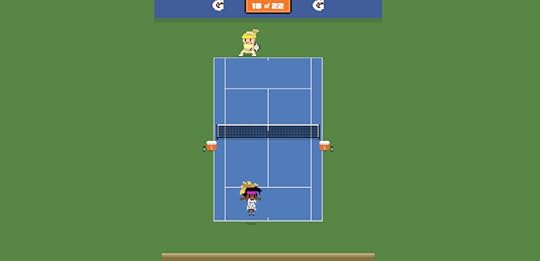
Snapchat certainly isn’t Changing The Game with Serena Williams’ Match Point, but it is a neat little homage to one of the most distinguished women in sports. To play, players only have to tap the screen, but it’s more challenging than it looks. Timing matters, and if a player misses a swing three times, the game starts back at the last checkpoint. Snapchat recognizes that racking up Grand Slam titles is no easy feat, so there are checkpoints are various stages; losing a match at level 18, for instance, won’t start the game over at the first round.
Serena Williams’ Match Point is available on ESPN’s Snapchat Discover channel, though you’ll have to swipe through a few other stories to get to it. When you do hit it, swipe up to play. If Snapchat isn’t your thing, the game is accessible via browser as well.

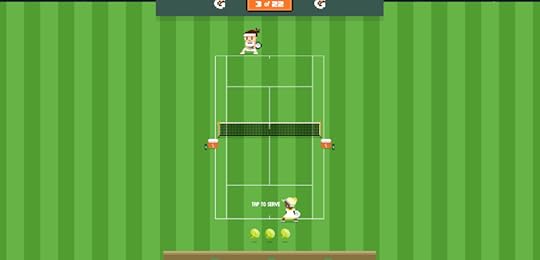

The post You can play a videogame on Snapchat now. Yes, really appeared first on Kill Screen.
Kill Screen Magazine's Blog
- Kill Screen Magazine's profile
- 4 followers



